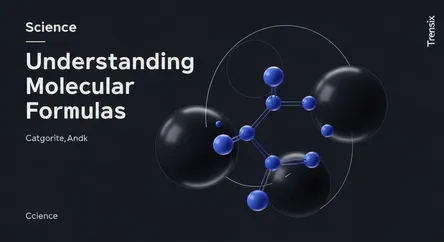Science
Understanding Molecular Formulas

A clear explanation of what a molecular formula is, showing the exact number of atoms in a molecule and why it's crucial in science.
What is it?
A molecular formula is a chemical notation that shows the exact number and type of atoms present in a single molecule of a substance. For example, the molecular formula for glucose is C₆H₁₂O₆, indicating six carbon atoms, twelve hydrogen atoms, and six oxygen atoms. This differs from an empirical formula, which shows the simplest whole-number ratio of atoms; for glucose, the empirical formula is CH₂O. While the empirical formula provides the ratio, the molecular formula gives the actual composition of the molecule, offering more detailed information.
Why is it trending?
As a foundational concept in chemistry, the molecular formula is constantly relevant in scientific research and education. Its importance is highlighted in the development of new materials, pharmaceuticals, and environmental analysis. Advances in techniques like mass spectrometry allow scientists to accurately determine the molecular formulas of unknown substances, fueling innovation. This is critical in fields from drug discovery, where the precise composition of a compound is paramount, to materials science, where new substances with unique properties are being engineered on a molecular level.
How does it affect people?
Molecular formulas directly impact daily life by defining the substances we use and consume. They are essential for pharmacists and doctors to understand the exact composition of medicines, ensuring patient safety and treatment effectiveness. In manufacturing, they guarantee the identity and purity of chemicals in food, cosmetics, and household products. For example, knowing the molecular formula of water is H₂O helps us understand its basic composition, while identifying complex formulas in pollutants helps scientists devise ways to protect our environment, ultimately affecting public health and safety.